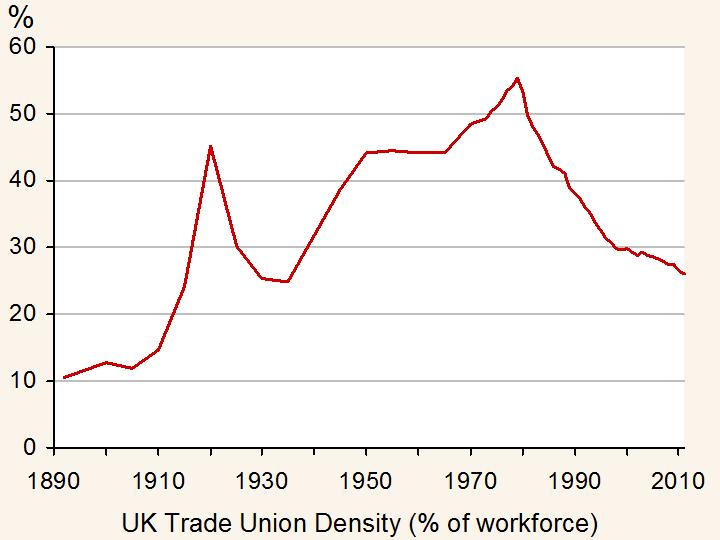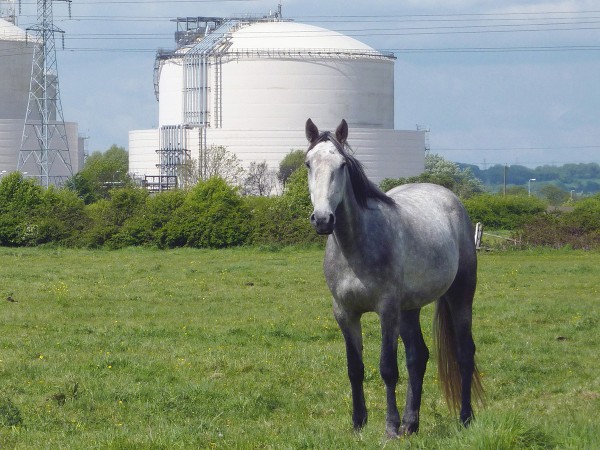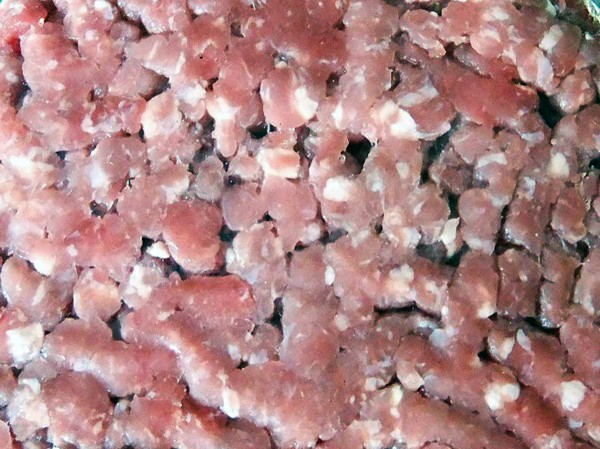 The most common demands for trade unions are for higher wages and better working conditions. However, pensions have become an increasingly important issue that many public-sector workers in particular have raised concerns over. While actions by trade unions have been less frequent and public in recent months, the Public and Commercial Services Union (PCS) has voted to strike.
The most common demands for trade unions are for higher wages and better working conditions. However, pensions have become an increasingly important issue that many public-sector workers in particular have raised concerns over. While actions by trade unions have been less frequent and public in recent months, the Public and Commercial Services Union (PCS) has voted to strike.
The labour market works like any other market – there is a demand for and supply of labour. The intersection of the demand and supply of labour give the equilibrium wage rate and equilibrium number of workers. Trade unions may aim to push up the wage rate above this equilibrium and the impact on the number of workers employed will depend on the type of labour market. If we have a competitive labour market, then the increase in wage will create an excess supply of labour: that is, unemployment. This is often a choice a trade union has to make. However, if the market is a monopsony, then it is possible for a trade union to force up wages and yet there may not be any fall in the number of workers employed.
Pay is just one of the issues being raised by the PCS. Public-sector pay was frozen for two years for those earning above £21,000. According to the Cabinet Office, this was necessary to ‘protect jobs in the public sector and support high quality public services.’ A 5% pay rise has been requested to counter an alleged 7% fall in earnings since 2008. 61% of those who voted in the ballot were in favour of strike action. Other concerns include job losses and pensions.
One concern of the PCS will be the low turn-out. Only 28% of the union’s members voted in this ballot and this is likely to weaken the union’s bargaining position. The government has monopsony power in employing civil servants and this is one of the reasons why a powerful trade union is likely to emerge: it acts to reduce the power of the monopsonist employer. Negotiations will typically take place between the employer and the trade union and with such a low turn-out, the power is certainly with the government. However, with the threat of strike action to occur around the time of the Budget, this does present something of a concern for the government, especially with growth remaining weak and the loss of the AAA rating.
Two separate pay offers have been made to 1.6 million public-sector workers, but Unison has suggested that members of PCS should reject them. If headway is not made in negotiations between PCS and the government, then strike action could be just around the corner. The following articles consider this looming industrial action.
Articles
Questions
- Use a diagram to illustrate a competitive market for labour and show how a trade union will aim to push up the wage rate. Show why a trade-off exists between the higher wage and the number of workers employed.
- Illustrate a diagram showing a monopsony and explain why the MC curve exceeds the AC curve. Why is it possible for a trade union to force up wages without creating a decline in the equilibrium number of workers employed?
- What other actions, besides striking, are available for trade union members? What are the costs and benefits of each relative to striking?
- Which factors, besides a low turn-out in the ballot, will reduce the trade union’s negotiating power?
- Public-sector pay was frozen for two years. If the government accepted the trade union’s pay demands, what would be the impact on the budget deficit? Could the higher pay help boost economic growth by creating a multiplier effect?
 The news in many European countries has been dominated in February by the ‘horse meat scandal’. Small traces of horse meat may be the result of faulty quality control. But the significant amount of horse found in several processed meat products suggest fraud at one or more points in the supply chain from farm to supermarket or other outlet. Indeed several specific suppliers, from abattoirs to processors are facing criminal investigation.
The news in many European countries has been dominated in February by the ‘horse meat scandal’. Small traces of horse meat may be the result of faulty quality control. But the significant amount of horse found in several processed meat products suggest fraud at one or more points in the supply chain from farm to supermarket or other outlet. Indeed several specific suppliers, from abattoirs to processors are facing criminal investigation.
The scandal has put the supply chain under intense scrutiny. Part of the problem is that the supply chain is often very long and complex. As the Guardian article states:
The food and retail industries have become highly concentrated and globalised in recent decades. A handful of key players dominate the beef processing and supermarket sectors across Europe. They have developed very long supply chains, particularly for their economy lines, which enable them to buy the ingredients for processed foods from wherever they are cheapest at any point, depending on exchange rates and prices on the global commodity markets. Networks of brokers, cold stores operators and subcontracted meat cutting plants have emerged to supply rapidly fluctuating orders “just in time”. Management consultants KPMG estimate there are around 450 points at which the integrity of the chain can break down.
Then there is the huge pressure on all parts of the supply chain to reduce costs.
 Supermarkets use their market power to drive down the prices of the products they buy from their suppliers and this has a knock-on effect backwards down the supply chain. This pressure has intensified as real wages have fallen and consumers have found their budgets squeezed.
Supermarkets use their market power to drive down the prices of the products they buy from their suppliers and this has a knock-on effect backwards down the supply chain. This pressure has intensified as real wages have fallen and consumers have found their budgets squeezed.
At the same time, beef and other meat prices have been rising as the costs of animal feed have soared. This all puts tremendous pressure on suppliers to add cheaper ingredients. Again to quote the Guardian article:
Manufacturers add other cheap ingredients including water and fat, and use concentrated proteins to bind the water and fat in. They may appear on labels as ‘seasoning’. One of the cheapest sources of these protein additives is pork rind. It is possible that horse hide is now also being used. The widespread adulteration of cheap chicken breast with pig and beef proteins and water has been uncovered in previous scandals. The beef proteins were derived from hydrolysed cattle hides. It is not illegal to use these protein concentrates so long as they are identified correctly to the manufacturer.
It is not surprising that if cheap horse meat becomes available to suppliers, such as from old horses towards the end of their working lives, some processing companies may be tempted to add it fraudulently, stating that it is beef.
The articles look at the issues of long and complex supply chains in the processed food industry and assess why they have evolved into their current form and the difficulties in regulating them.
Horsegate: heed economics of the cold chain The Grocer, Andrew Godley (16/2/13)
Horsemeat scandal: the essential guide The Guardian, Felicity Lawrence (15/2/13)
After the horse has been bolted The Economist (16/2/13)
Slavery, not horse meat, is the real scandal on our doorstep The Telegraph, Fraser Nelson (14/2/13)
Industry must take the reins on food safety Globe and Mail (Canada)Sylvain Charlebois (15/2/13)
Supply chains changed the growth model The Economist, Richard Baldwin (15/8/12)
Supply-chain management The Economist (6/4/09)
Tesco pledges to open up supply chain after horse meat scandal The Telegraph (16/2/13)
Horse meat scandal: Shoppers who buy ‘cheapest food’ at risk The Telegraph, James Quinn, Jason Lewis and Patrick Sawer (16/2/13)
Let Them Eat Horse Bloomberg, Marc Champion (15/2/13)
Scandal shows meat supply chain must be policed heraldscotland (14/2/13)
MPs push for new powers for FSA as officials seize yet more suspect meat Independent, Martin Hickman (13/2/13)
Questions
- Why do supermarkets and their suppliers use long supply chains?
- Explain the concepts of ‘countervailing power’ and ‘monopsony or oligopsony power’? How do they apply in the processed meat supply chain?
- Identify the types of transactions costs in the processed meat industry.
- In what ways do consumers (a) gain and (b) lose from such supply chains?
- Why is the problem of fraud in processed food supply chains likely to have intensified in recent years?
- How have supermarkets reacted to the horse meat scandal? Why has it taken the scandal to make them react in this way?
- To what extent is the problem simply one of inaccurate labelling?
- To what extent is there a principal–agent problem in the processed meat supply chain?
You may ask how on earth bins are related to the post. The simple answer is that these are two things that may not be collected. They say that one wedding brings on another, but it looks like that this also applies to strikes. The Winter of Discontent in 1978-9 saw widespread industrial action, where the country almost came to a stop. Is this really where we are now?
The postal strike has been widely publicised, but it’s not just your post that may not arrive. Bus drivers have been striking against First Bus in Greater Manchester and various other places following pay freezes. British Airways is to face the possibility of strike action over new contracts, working practices and pay freezes after talks broke down. The Spanish company Iberia had to cancel over 400 flights over two days due to protests, and in Leeds, rubbish hadn’t been collected for eight weeks.
So, what’s causing all of this discontent? Are we going to see more and more workers protesting over contracts, hours of work and notably pay?
One key thing about strikes is that they affect everyone, whether it’s walking past piles of bin bags; not receiving birthday cards; getting to work late; cancelling holidays or receiving fines for late payment, and even for not submitting your tax returns. These are all problems that people have been facing, not to mention the loss of income some businesses have seen, especially resulting from the postal strike. With the government looking to reduce public-sector debt by increasing taxes or spending cuts, including public-sector pay freezes and controls on banking bonuses, we could be in for another winter of discontent with further disruptions to come.
Articles
Questions
- What is the purpose of a strike and how effective are they likely to be? What are the costs?
- One of the reasons for strike action is pay freezes. What happens in an individual labour market when pay is frozen? What happens to the demand and supply of labour? Illustrate your answer with a diagram.
- Some news articles have referred to ‘picket lines’ forming. What are they?
- What is the difference between collective bargaining and individual bargaining? Which is more effective?
- Illustrate on a diagram the effect of a trade union entering an industry. How does it affect equilibrium wages and equilibrium employment? Is there any difference if the trade union faces a monopsonist employer of labour?
- Do you think the strike action is right? Why or why not? What are the things you have considered?
- Discuss whether we are heading towarads another ‘winter of discontent?’ Can it be stopped?
Tea prices have soared in recent months. Explanations can be found on both the demand and supply side. But while this might be bad news for tea drinkers, the news is more mixed for tea growers. So just what are the causes and consequences of the price rises? The following linked articles look at the issues.
Tea prices hit record high as supplies tighten Financial Times (19/8/09)
No break for Britons as tea price set to soar Scotsman (19/5/09)
Tea prices hit record high (video) BBC News (21/8/09)
Price of cup of tea goes up (video) BBC news (17/8/09)
Africa Tea Prices Climb to a Record on Dry Weather Bloomberg (20/8/09)
Kenya Tea Prices Hit Record High Before Ramadan FlexNews (19/8/09)
African tea prices ‘to extend gains’ China People’s Daily Online (18/8/09)
Sri Lanka to revive all closed tea factories ColomboPage (24/8/09)
Land usage should be flexible: Tea panel The Economic Times of India (24/8/09)
For tea price data see:
Tea Monthly Price Index Mundi
Questions
- Identify the factors on the demand and supply sides that have led to the rise in tea prices. Draw a diagram to illustrate your answer.
- Under what circumstances will farmers benefit from a rise in tea prices? What is the relevance of the market price elasticity of demand to your explanation?
- If the price of tea in the shops rises, will this necessarily mean a rise in the price to tea growers and in the wages of workers on tea plantations? Explain using concepts of competition and market power.
- What will be the effect of using more land for growing tea on (a) the price of tea and (b) the incomes of tea growers?
 The most common demands for trade unions are for higher wages and better working conditions. However, pensions have become an increasingly important issue that many public-sector workers in particular have raised concerns over. While actions by trade unions have been less frequent and public in recent months, the Public and Commercial Services Union (PCS) has voted to strike.
The most common demands for trade unions are for higher wages and better working conditions. However, pensions have become an increasingly important issue that many public-sector workers in particular have raised concerns over. While actions by trade unions have been less frequent and public in recent months, the Public and Commercial Services Union (PCS) has voted to strike.
